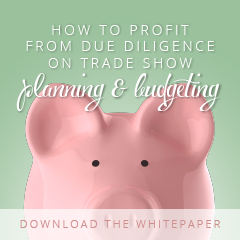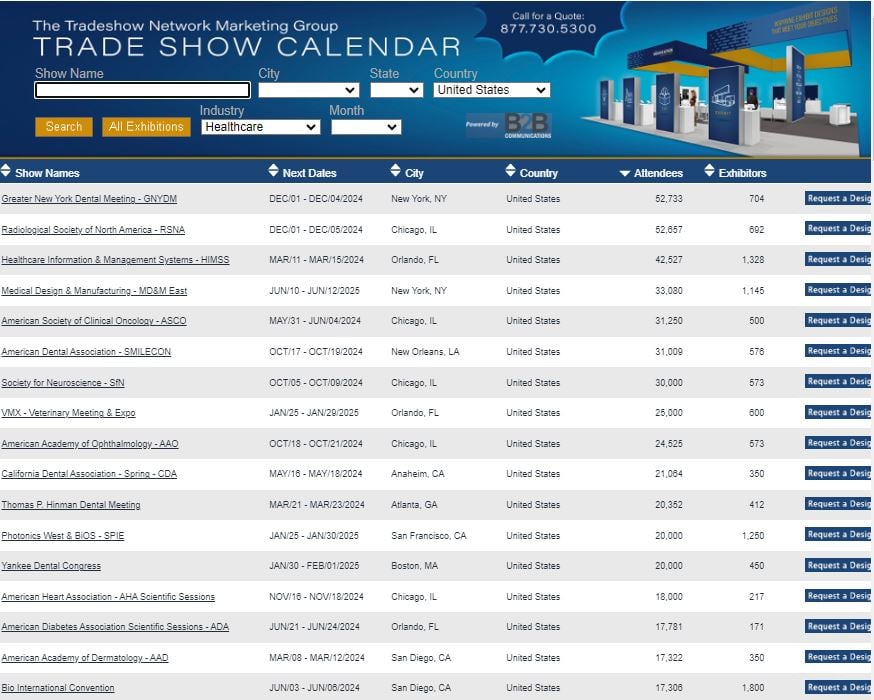Exhibiting at trade shows is a big investment of time, effort and money. It needs to pay off in measurable results. What makes trade shows so appealing as a marketing tool is the ability to conduct face-to-face marketing, to design a display that reflects well on your brand image and to staff your exhibit with your best representatives. Where else can you find so many potential customers in person in one place?
 The Center for Exhibition Industry Research (CEIR), in their study, Purchase Process and Customer Relationships, found, “The 'sweet spots' for exhibitions lie in the pre-purchase and post-purchase relationship management phases. More than a majority of exhibitors and attendees assign high importance to interacting face-to-face at exhibitions at all pre-purchase stages. Many attendees also place high importance on interacting for the purpose of maintaining relationships with vendors after they buy, with 63 percent of attendees assigning high importance and 76 percent of exhibitors.
The Center for Exhibition Industry Research (CEIR), in their study, Purchase Process and Customer Relationships, found, “The 'sweet spots' for exhibitions lie in the pre-purchase and post-purchase relationship management phases. More than a majority of exhibitors and attendees assign high importance to interacting face-to-face at exhibitions at all pre-purchase stages. Many attendees also place high importance on interacting for the purpose of maintaining relationships with vendors after they buy, with 63 percent of attendees assigning high importance and 76 percent of exhibitors.
“When it comes to settings for face-to-face interactions at exhibitions, the most preferred are one-on-one interactions. Over half of attendees, 56 percent, and over two-thirds of exhibitors, 67 percent, rank this setting number one. No other setting comes close for top ranking, with product demonstrations the second most mentioned by 20 percent of attendees and 19 percent of exhibitors. “
It is clear that attendees who go to trade shows are serious about purchasing and solidifying vendor relationships. The key to success is matching your business objectives to your target market and show selections, while maximizing your budget.
Step 1. Match your business objectives to your trade show marketing efforts.
Trade show marketing should be tied to overall sales and marketing objectives, as well as the strategy of the business itself.
You can focus your trade show efforts on your strategy by asking questions such as:
· What are we looking to achieve with our trade show marketing efforts – increase awareness, generate leads, change perception, etc.?
· How do we want to be perceived in the marketplace? How would we like a customer to describe our company and our products?
· Who is our target audience, the size of their business, and their professional titles? What shows do they attend?
· What measurable results can we expect to accomplish at each trade show?
With your business objectives in mind, you can narrow down your trade show schedule to concentrate on those shows that best reach your target audience.
Step 2. Select the optimal shows for your business objectives.
Here are some tips to help you decide on the right show for your business:
Make sure the show’s audience demographics match your target market. Understand how many people will attend and how much time they will spend in the exhibit hall. Will there be keynote speakers? Will workshops bring people in? How much pre-show marketing will the show management do to attract attendees? If you know the size and demographics of the audience, you can make an informed decision on whether this show is worth the investment.
Check the history of the show to see how many exhibitors participated during the last few years. If the trend in attendance and vendors is up, the show is headed in the right direction.
Contact vendors and others who have exhibited at past shows. Connect with people who are trying to reach the same audience, but who aren’t direct competitors, and ask them if they thought this particular show was effective.
Investigate your exhibit floor size requirements and options. Bigger may be better, but it is also more expensive. So are configurations like a peninsula, island, or corner booth. Your exhibit should be as prominent as your company is in your industry, but you don’t want to overspend.
Location, location, location. Look at the show floor layout to determine the most favorable traffic flow patterns and make sure you apply for the best spots on the floor. Being in the back is not a good place to be, even if you are saving money. The most popular shows book booth space quickly, so it’s best to decide on the shows you want at least one year in advance.
Make a list of potential shows. Ask your sales people and marketing staff what shows they think would work and investigate.
Step 3. Set a budget.
Evaluate the potential return.
The place to start is to quantify the return you expect to receive by exhibiting. In deciding on the goals for exhibiting, important questions to ask are:
What does it cost to get a lead from direct sales vs. trade shows?
How many leads can we expect to convert to customers at each show?
What is the profit on each upfront sale?
What is the long-term value of the customer? That is truly the most important question.
You might also ask: Will we influence people to purchase? Support a brand? Get leads? Introduce a new product? Try to make a sale? Get publicity? Meet current customers?
If you cannot benchmark and estimate the answers to those questions, you cannot make a rational ROI decision on investing in a trade show.
Estimate the total cost of the exhibit and the show.
For a rough estimate of your total event budget, when using a rental exhibit, multiple the cost of your exhibit space by three. Assuming an average floor space cost of around $22 per square foot, a rental exhibit for a 20’x20’ space would cost about $26,400.
Total Show Costs with Custom Booth Estimate:
For the total event budget with a custom exhibit, multiply the cost of your exhibit space by 5 to 6, depending on how elaborate your display will be. Assuming an average floor space cost of around $22 per square foot, a custom exhibit for a 20’x20’ space would cost about $44,000- $52,800.
Step 4. Make a plan.
Tradeshow planning means developing the whole package:
· Setting clear objectives and goals
· Choosing the shows with the best ‘fit’ for your organization
· Setting a budget based on measurable returns
· Creating an effective trade show booth design that reflects well on your brand
· Developing the right promotional giveaways
· Promoting your presence through social media, e-mail marketing, and networking
By doing your research and evaluating the potential return, you will be able to determine what you can afford to budget for a trade show event. Then keep accurate records and details of each event so you can evaluate whether the ROI is enough to justify exhibiting again next year.
Download this entire Whitepaper along with a budget and planning checklist by clicking on the link below - print and fill it out for your next trade show event!





